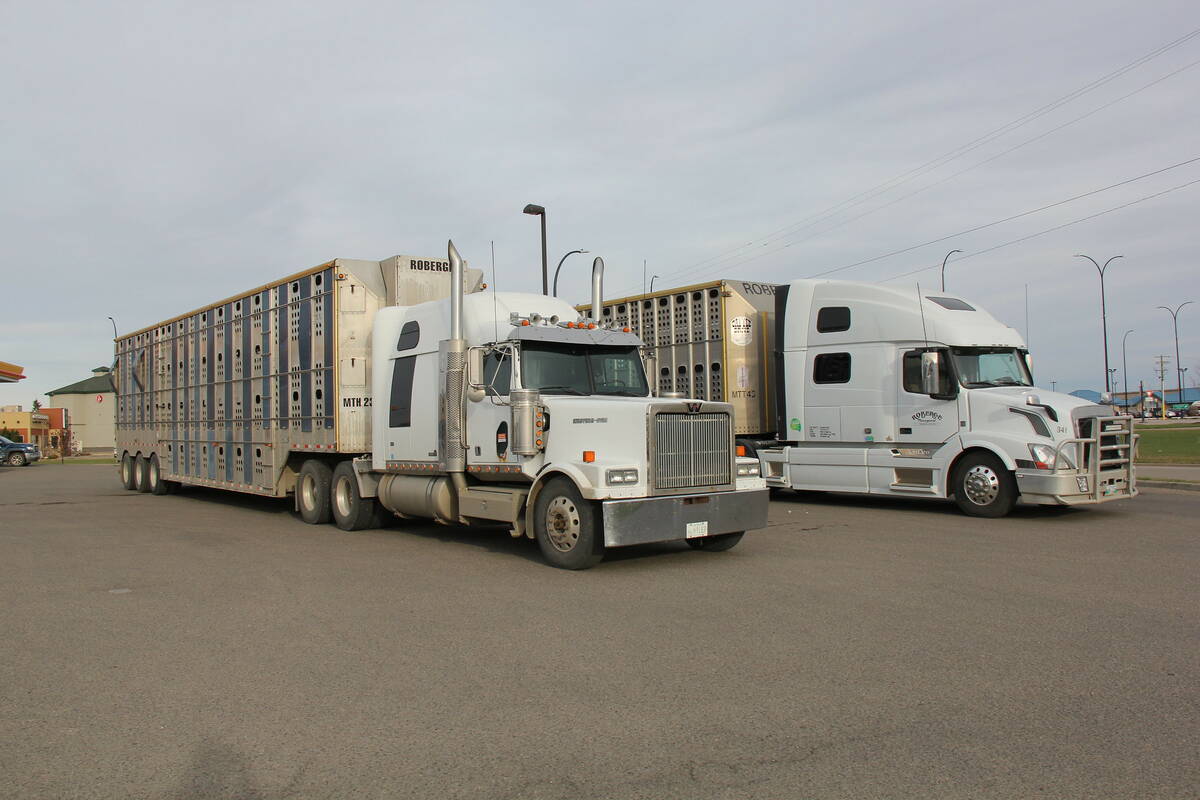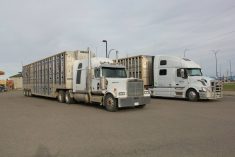This cattle market information is selected from the weekly report from Canfax, a division of the Canadian Cattlemen’s Association. More market information, analysis and statistics are available by becoming a Canfax subscriber by calling 403-275-5110 or at www.canfax.ca.
Fed cattle prices drop
Falling North American wholesale beef prices and lackluster U.S. packer demand pressured fed cattle prices lower last week despite the support of a weaker Canadian dollar.
Carcass weights are growing and delayed delivery is pushing beef production higher.
Read Also

Rest stops of no benefit to feeder calves during long hauls, according to researchers
Three Canadian transport trials showed that providing a rest stop during long-distance transport provided no clear or consistent benefits for the health or welfare of feeder calves.
The average steer carcass was 876 pounds, up from 859 lb. last year at the same time.
The Canfax weighted average price on steers was $81.25 per hundredweight, down $1.49 from the week before, and heifers averaged $80.92, down 84 cents.
Rail prices were down almost $3 from the previous week.
Sale volume fell 30 percent to about 17,000 head. A lot of cattle were expected to be carried over into this week.
The cash to futures basis weakened to $12.60 under from $8.56 under the week before.
Fed exports to the United States for the week ending Sept. 12 at 9,314 rose 23 percent from the previous week but were 41 percent lower than last year.
Packers are comfortable with their inventory and won’t bid aggressively, but the weak loonie might help lift prices to about $82-$83 this week.
Cow prices were mostly steady. Packers have a backlog and more cows are expected to go to the market, which means prices could be pressured lower.
D1, 2 cows averaged $40.23 per cwt., down 29 cents, and D3 cows averaged $35.79, down 31 cents.
Butcher bulls averaged $49.83, up 21 cents.
Feeder prices weaken
Feeder price averages fell for all weight classes.
With the Canadian dollar trading slightly lower and a more favourable cost of gain, feedlots could get more aggressive and start filling up empty pen space, Canfax said.
Auction market volumes were 13 percent lower at 49,906 head. That was down two percent from last year.
Overall, steers were 85 cents per cwt. lower and heifers fell $1.30.
Feeder cattle exports for the week ending Sept. 12 were 2,607 head, down from 6,251 the week before and 20,274 the same week last year.
The previous week’s increased exports might have been the result of Canadians sending retained ownership feeders south to take advantage of cheap grain.
There were no price quotes for bred cattle. Bred cattle volumes should increase with many herd dispersals booked for later in the fall.
Beef weakens
U.S. Choice cutouts fell $1.35 US to close at $140.34, the lowest price since July 20, and Select was down 58 cents to $133.58. The weaker cutouts were mostly because of lower prices on trimmings and ground meat.
Canadian AAA cutouts for the week ending Sept. 18 were $3.03 Cdn lower than the week before and $22.51 lower than last year.
AA cutouts were $2.29 lower than the previous week and $17.17 lower than last year.
The Montreal wholesale market for delivery this week was steady at $173.
The Alberta live steer price as a percent of AAA cutout was 53 percent, almost two percent lower than the week before.














